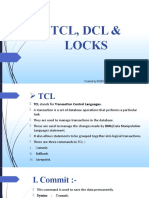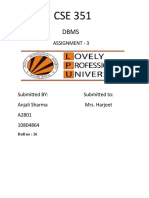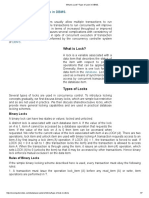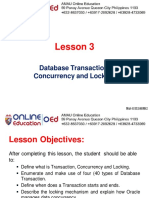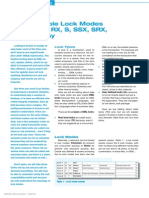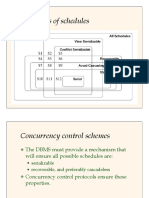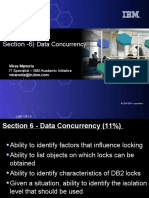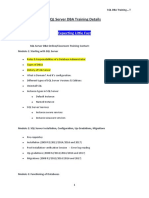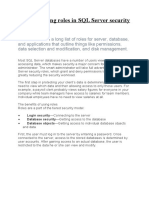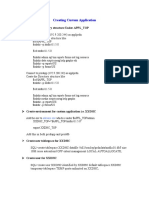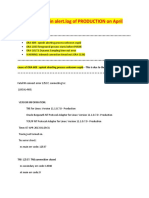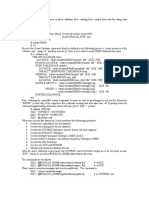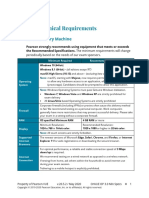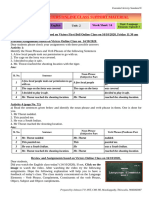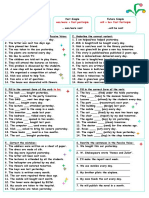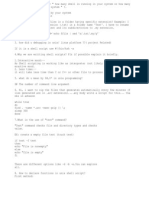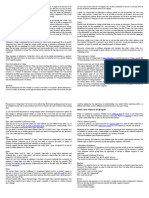0% found this document useful (0 votes)
127 views9 pagesOracle Locking Essentials
Locks and latches are used to manage concurrent access to Oracle database objects. Locks protect data and are shared between sessions while latches protect shared memory structures and cannot be shared. There are different types of locks like data locks, DDL locks, and lock modes including exclusive, share, row share, and row exclusive. Tuning locking involves changing application code to use less restrictive locking, avoiding long transactions, and killing blocking sessions if needed.
Uploaded by
niaamCopyright
© © All Rights Reserved
We take content rights seriously. If you suspect this is your content, claim it here.
Available Formats
Download as DOC, PDF, TXT or read online on Scribd
0% found this document useful (0 votes)
127 views9 pagesOracle Locking Essentials
Locks and latches are used to manage concurrent access to Oracle database objects. Locks protect data and are shared between sessions while latches protect shared memory structures and cannot be shared. There are different types of locks like data locks, DDL locks, and lock modes including exclusive, share, row share, and row exclusive. Tuning locking involves changing application code to use less restrictive locking, avoiding long transactions, and killing blocking sessions if needed.
Uploaded by
niaamCopyright
© © All Rights Reserved
We take content rights seriously. If you suspect this is your content, claim it here.
Available Formats
Download as DOC, PDF, TXT or read online on Scribd
/ 9


